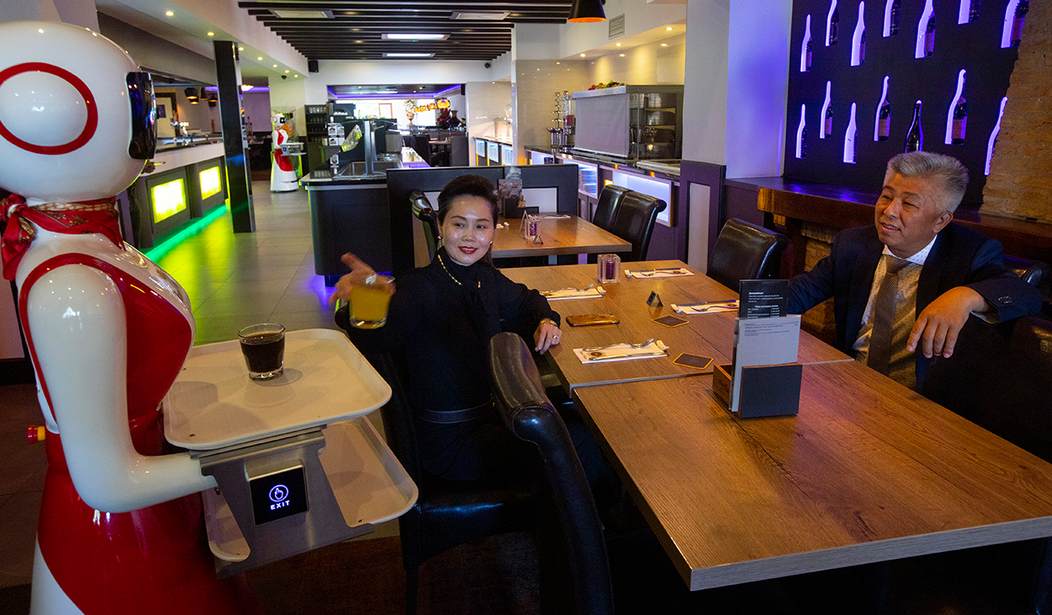NBC News has an interesting report out this week on one of the less-discussed side-effects of the pandemic in the United States and around most of the developed world. The subject primarily deals with employment, specifically how companies have responded to government shutdowns and social distancing requirements. We already knew that remote working surged massively in any type of job where it was an option. But even for jobs that have to be done “in person,” technology was employed to get things done when workers couldn’t (or wouldn’t) come to the workplace. In many cases, that meant additional automation. In others, companies moved to incorporate robots where possible.
But now that we may (eventually) be moving toward the end of the pandemic, a lot of jobs that used to be done by people may not be coming back. Having invested in robotics and learned how much of the workload these smart machines can actually take care of, there may be little incentive for employers to go back to the old flesh and blood model of their workforce.
Now unemployment is a lot higher, and a much-mentioned post-pandemic economic trend is the continuation of greater workplace automation that began during the outbreak to protect people from Covid-19. The economics team at Wall Street bank Goldman Sachs are highlighting the shift to ecommerce and the “digitization of the workplace” — including cost and time savings from remote work and virtual meetings — as keys to higher productivity and economic growth over the next few years. Meanwhile, labor shortages and surging demand have businesses looking at how to employ technology of all sorts to replace needed workers.
Supermarkets are installing more self-checkout kiosks, with some even experimenting with computer-vision capabilities that would eliminate the need for cashiers. Even older technology, such as QR codes, are being employed at places like restaurants, so diners can order from their tables by scanning those pixelated square barcodes rather than consulting a server. The Financial Times reported recently on a jewelry store owner who revamped her set-up so that window shoppers can use smartphones to purchase items by scanning those little square codes. She used to pay a part-time salesperson, but not anymore.
Necessity may be the mother of invention, but it’s also turning out to be the father of the destruction of a lot of lower-wage jobs. In addition to the examples mentioned in the linked report, this phenomenon may be particularly prevalent in the foodservice industry. As has been regularly reported, even after workers were cleared to return to the workforce, the fast-food industry was having a very difficult time getting workers to return, often because they were making at least the same amount of money from federally enhanced unemployment benefits that kept on paying for a very long time.
The problem is that the technology was already available to replace many of those workers. People who take orders can readily be replaced by automated kiosks that are currently ready to be installed and can be used by almost anyone. There’s even a robot out there already that flips burgers. Some of these outlets are already realizing that they really didn’t need all that many human workers.
What kept many outlets from making the switch in pre-pandemic days was the initial cost of switching to the new technology and uncertainty over how well it would perform. And as long as there was a steady supply of high school graduates willing to mop floors and operate the fry machine, why bother taking the leap? But once everyone went home and the kiosks and robots went to work, the world changed. Why would you bring back three shifts of human checkout clerks when you can set up a kiosk that will work for 18 hours straight without complaining, never takes breaks or vacations and won’t call in sick unless it has to undergo maintenance? The machines may be expensive initially, but they pay for themselves quickly enough and then labor costs actually decrease significantly.
NBC attempts to make the anti-Luddite arguments that we’ve heard in the past, saying, “but it creates jobs!” And to a certain extent, that’s true. There are probably a lot more job openings today in the tech sector for people to design, build and do maintenance on robotics. But that doesn’t mean that you’re creating any jobs that will be open to the workers you just put out on the street. You can’t just tell someone with a high school degree and two years of experience bagging Whopper Juniors to go out tomorrow and start designing robots. And even if you could, it takes far fewer people to maintain kiosks and robots than used to be required to staff up the entire store.
The age of the robots is upon us, and its arrival was apparently significantly hastened by the pandemic. Fortunately, they don’t look much like Terminators or have that sort of firepower. Well… at least not yet. But the day is probably coming.









Join the conversation as a VIP Member